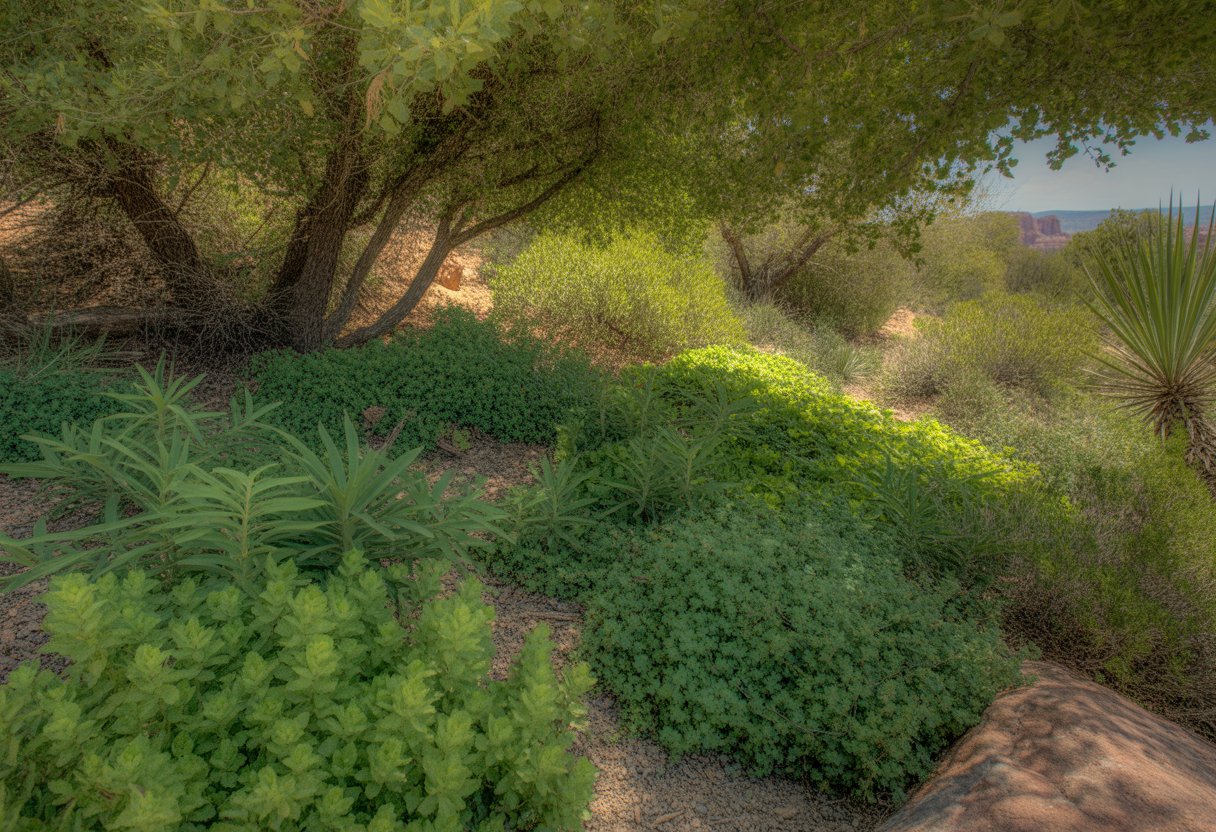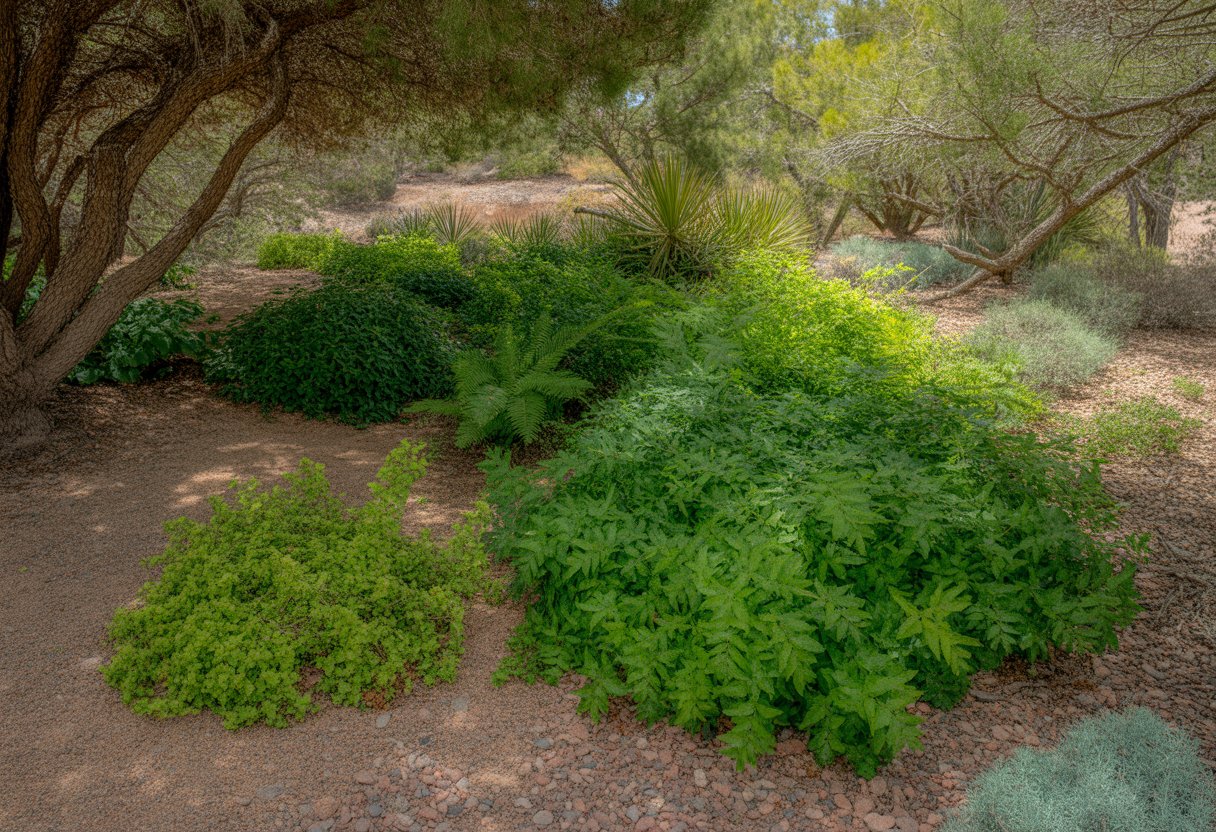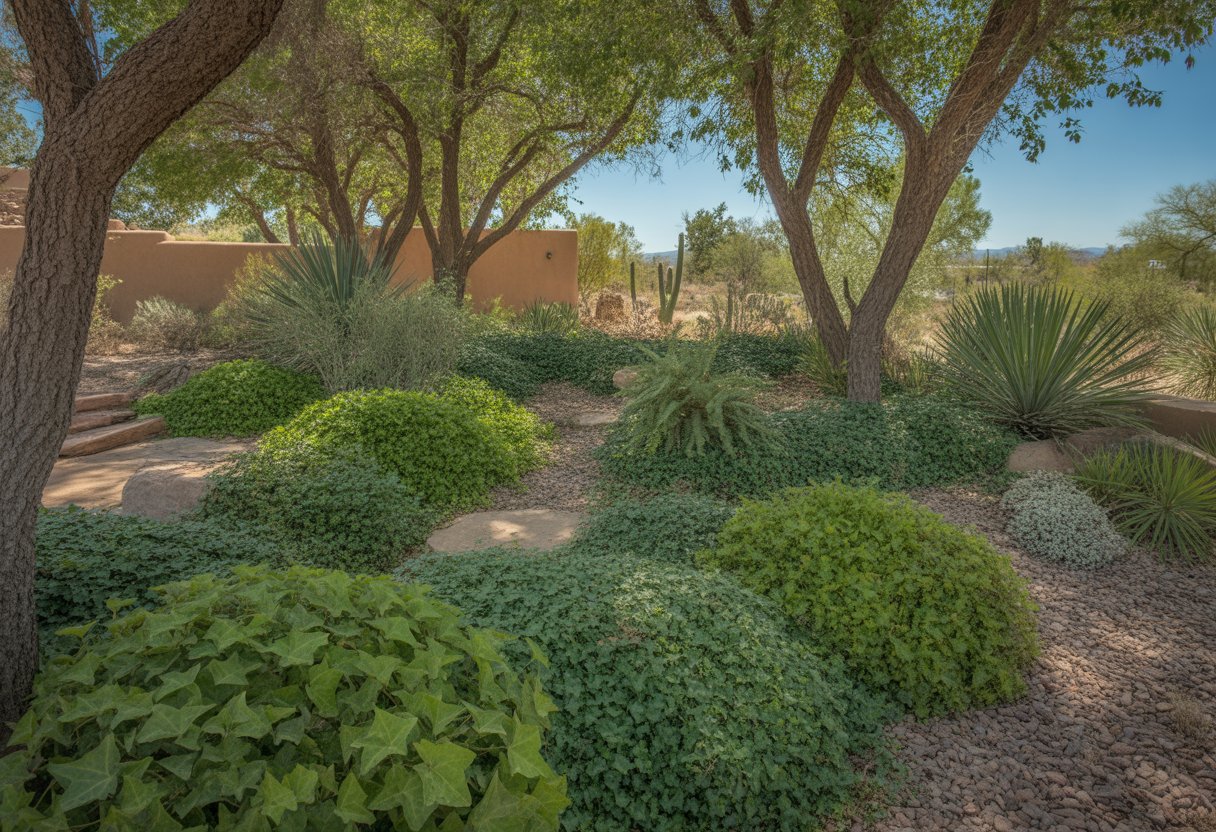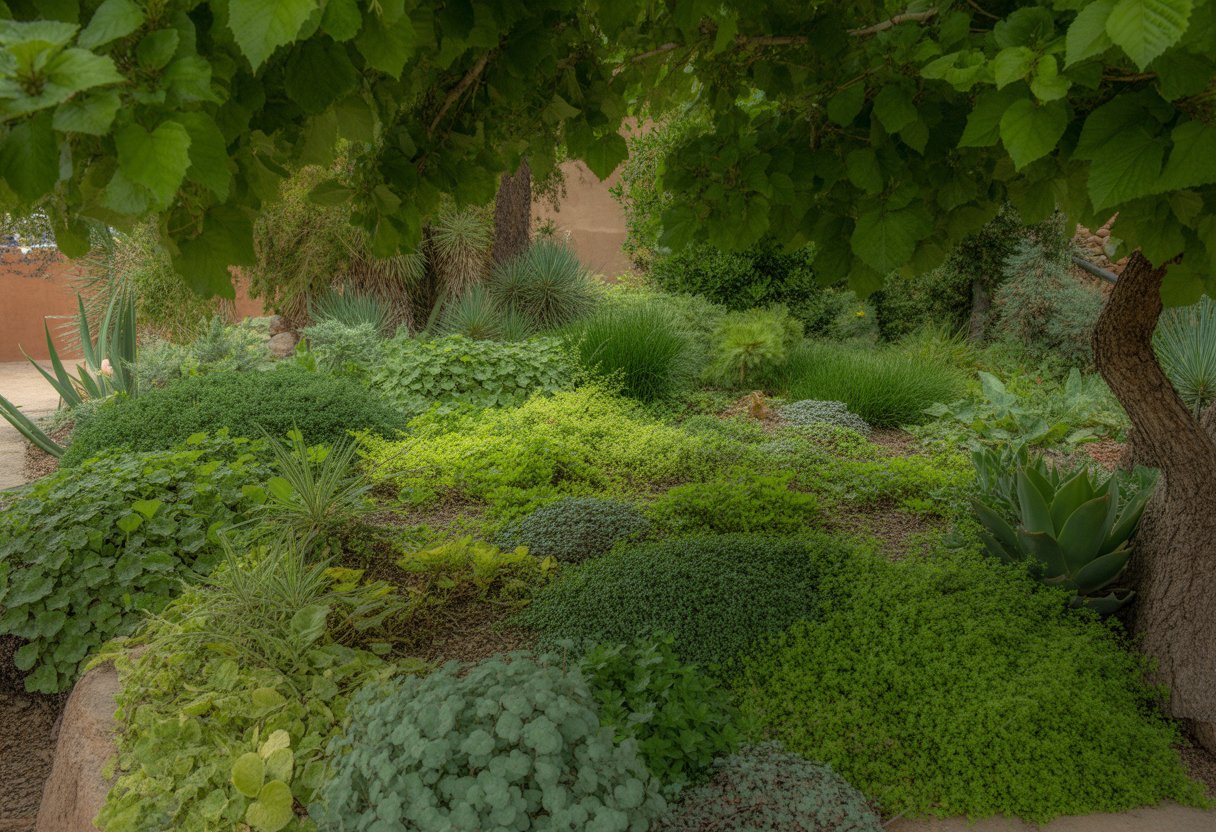Shade Loving Ground Covers New Mexico: Best Plants for Shady Landscapes and Low-Maintenance Gardens
Gardening in New Mexico can be a bit of a puzzle, especially when it comes to finding plants that actually like the shade. Most native stuff seems to crave sun, but there are some ground covers that really do well in those dimmer corners and don’t need much water or fuss.

You’ll find options like ajuga, pachysandra, and native sedges that can handle low-light spots. These plants take care of erosion, keep weeds down, and make a thick, green carpet where grass just gives up.
Picking the right ground cover for shade keeps your soil healthy and adds a little style to those shadowy patches. Think about your local climate and soil before you buy—plants that are happy from the start will need way less attention later.
Best Shade-Loving Ground Covers for New Mexico

If you want ground covers for shade in New Mexico, focus on plants that can take partial to full shade and don’t guzzle water. You’ll want to mix in some perennials, evergreens, and maybe a few flowering types for a little variety.
Top Perennial Ground Cover Plants
Perennials like Epimedium and Heuchera love those shady spots and don’t ask for much water once they’re settled in. They’re tough enough for New Mexico’s dry spells and help keep soil where it belongs.
Epimedium sticks around all year with pretty foliage, while Heuchera shows off with leaves in shades from deep purple to lime green. These two don’t mind the cold snaps and crazy temperature swings that happen here.
Usually, they grow anywhere from 6 to 18 inches tall and spread out to cover bare patches. If you want something you can plant and mostly forget, these are solid choices.
Evergreen Options for Year-Round Coverage
For year-round green, Vinca minor (periwinkle) and Pachysandra terminalis are hard to beat. They keep weeds out and stop soil from washing away on shady slopes or under trees.
Vinca minor brings glossy leaves and spreads pretty fast, handling New Mexico’s climate with just moderate watering. Pachysandra prefers heavier shade and likes its soil a bit on the acidic side.
Both usually stay between 4 and 12 inches tall, making a nice, thick layer. Their evergreen habit keeps your garden looking alive, even in winter.
Flowering Ground Covers for Shady Spots
If you want some color, try Tiarella cordifolia (foamflower) or Lamium maculatum. Tiarella pops out delicate white or pale pink flowers in the spring, and Lamium brings silver-marked leaves with blooms in white, pink, or purple.
They do best in moist, well-drained soil and need partial to full shade. Most of the time, they stay low—about 6 to 12 inches tall—and bring in pollinators when they bloom.
These flowering ground covers are a nice way to liven up shady spots without a ton of work.
Adaptable Species for New Mexico Climates
New Mexico’s weather is all over the place—dry spells, cold nights, even some brutal sunlight. If you want your ground covers to survive, go for plants that can handle drought, cold, or have reflective leaves to keep cool.
Drought-Tolerant Ground Covers
Some ground covers just shrug off drought. Sedum and ice plant, for example, store water in their leaves and don’t wilt when it’s dry.
Sedum is a favorite because it barely needs water and still spreads out in partial shade, plus it brings in pollinators with its little flowers.
Ice plant has fleshy leaves and wild, bright blooms. It grows fast and keeps weeds down, especially at the shady edges of trees.
If you don’t want to bother with much irrigation, these are both worth a look.
Cold-Hardy Selections
Parts of New Mexico get hit with frost and freezing temps. Some ground covers don’t mind at all.
Snow in Summer (Cerastium tomentosum) stands up to the cold and makes thick mats of silver-green leaves with white flowers in late spring.
You can also try native grasses or low shrubs—they shrug off freezes and still cover shady ground.
Ground Covers with Silver Foliage
Silver leaves actually help plants by reflecting sunlight and keeping them cool, which is handy in New Mexico’s bright-but-shady spots.
Cerastium (Snow in Summer) stands out with its fuzzy silver leaves—great for contrast under trees.
Some sedums have silvery or gray-green foliage too, which helps them hold onto water.
Silver-leafed ground covers look cool and help your plants survive the heat.
Designing Landscapes with Shade-Loving Ground Covers

In New Mexico, shade-loving ground covers can really pull a landscape together. They fit in nicely with shrubs and trees, especially in places where you want to keep moisture in and protect the soil.
Combining Shrubs, Trees, and Ground Covers
Tucking ground covers under trees or next to shrubs does a few things: it keeps weeds out, stops erosion, and makes the garden look layered. Epimedium or Lamium are good picks for a dense, low cover.
Shrubs like desert honeysuckle or mountain mahogany bring some height, while trees such as ponderosa pine and piñon pine cast the kind of shade these ground covers love. Give everything enough space so air can move and diseases don’t take hold.
Ground Covers for Wooded Areas
In wooded spots, plants like wild ginger, sweet woodruff, and ferns just seem to belong. They like the cool, moist ground under trees and help hold the soil together.
Go for native or well-adapted ground covers—they’ll survive with less water. Invasives? Definitely skip those. Mixing plants of different heights and light needs will boost biodiversity and keep things interesting.
Garden Layout and Maintenance Tips
Try to direct water toward your ground covers so they soak up as much as possible. Mulch helps keep moisture in and roots happy.
If you prune trees and shrubs a bit, more light will reach the ground covers. Pick up fallen leaves now and then to avoid fungus problems. Sometimes, you’ll want to divide or move ground covers to keep them thick and neat.
Noteworthy Shade-Loving Varieties for New Mexico Gardens

There are quite a few ground covers that do well in New Mexico’s shadier corners. They cover soil, don’t need much water once they’re going, and bring some seasonal flair with their leaves or blooms.
Sweet Woodruff (Galium Odoratum)
Sweet Woodruff (Galium odoratum) forms dense mats in shady spots. It likes moist, well-drained soil and a bit of humidity, so try it under trees or along shaded walls.
You’ll notice its bright green, whorled leaves and little white flowers in spring. Sweet Woodruff even smells sweet when dried, but it can spread pretty fast—sometimes it needs a trim.
Vinca Minor
Vinca minor (periwinkle) is a tough evergreen that handles shade in New Mexico just fine. It’s not picky about soil and shrugs off drought after it’s established.
It shows off glossy, dark green leaves and blue-violet flowers from spring through early summer. Vinca minor is great at keeping weeds out and stopping soil erosion, especially on slopes or under trees.
Creeping Thyme
Creeping Thyme works in partial shade, especially where there’s a bit of morning sun. It likes well-drained, even rocky soil—kind of like its Mediterranean homeland.
This one has aromatic, tiny leaves and blooms in purple, pink, or white through summer. Pollinators love it, but you’ll probably need to water it now and then during dry stretches. Creeping Thyme also handles some foot traffic, so it’s handy along pathways.
Hosta and Dianthus
Hosta does best in shaded or partially shaded spots. Its broad, textured leaves make for excellent ground cover.
You’ll want to keep the soil consistently moist for hostas. They really shine in richer, well-drained soils, especially where there’s regular watering.
Dianthus is a bit different. It likes partial shade and soil that drains well.
Its flowers? Fragrant and available in a bunch of colors—think pinks and whites. They pop against the hosta’s foliage and bring some much-needed color.
Combining both plants can give your shady garden beds layered texture and a little extra visual interest. Why settle for boring when you can mix things up?


